There are a number of different types of RV’s (Recreational Vehicles) on the market and each has its own place for the many different tastes and budgets.
Following is a description of the various types available.
CLASS A
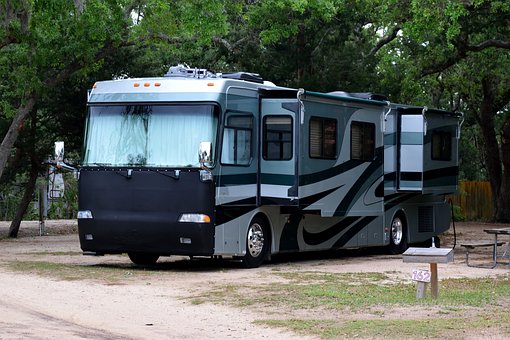
The Class A is the most prestigious of all the RV’s available. While the Class A is big; it’s also comfortable, has an abundance of storage space. It comes in various lengths and levels of comfort. The Class A can be expensive to purchase and maintain. This large motorhome can be had with a gas or diesel engine. The average gas engine Class A is around 6-10 miles per gallon. The diesel engine is more fuel efficient and you should realize somewhere around 8-14 miles per gallon. Class A’s are easy to finance and insure and generally don’t have a lot of repairs. These RV’s are self-sufficient and allow one to “boondock” (live off-grid) for a lengthy period of time. If you happen to be on a long trip, you can pull into a rest area on the freeway and prepare dinner and even spend the night there in many of the rest areas.
Other than the gasoline usage as mentioned earlier, these large RV’s have other disadvantages as well. For example, you cannot just stop and park these vehicles anywhere like you can a smaller one. When you get to your destination and get parked and hooked up to water, electricity, cable, sewer, etc; you suddenly realize you don’t have all the groceries you need for dinner. What to do? Well, if you towed your family car behind your motor home, you simply unhook it and drive to the supermarket. Otherwise, you have to secure everything inside the motor home, unhook the electricity, water, cable, sewer, etc and drive to the supermarket. What a pain that could be. If some sort of major mechanical problem manifests itself on the road, you are forced into a motel until your home and transportation is repaired.
CLASS B
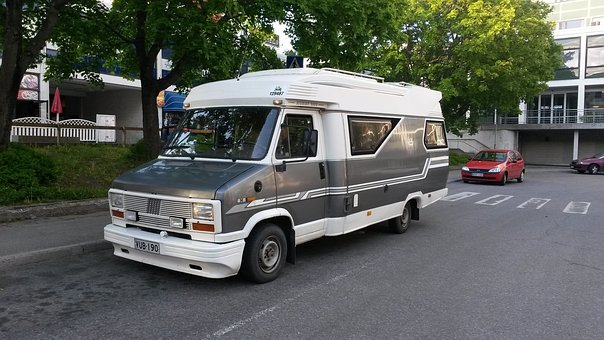
This RV is often referred to as a conversion van. It’s basically a van that’s been converted to a motor home. These are not much bigger than the family SUV. You can park most in a regular parking space which comes in handy if you’re on the road and get tired and want to take a nap. You don’t have to look for an RV park as you would if in a Class A. These can be parked on a city street and you could take a nap and no one would be the wiser. Want to go to the beach? You can with a Class B and park along with other vehicles. Not so with a Class A. Being not much larger than an SUV, your gas mileage is good and they can be taken off-grid and stay there for a lengthy period as most of these RV types are self-sufficient, including a generator for all your electrical needs.
The Class B tends to be the most expensive per square foot among all RV’s. Storage usually is adequate, but nothing compared to the Class A. This vehicle is suitable for 1 or 2 people, but a kid and a dog can be accommodated quite well for a long weekend trip. I know people who actually live in their Class B’s full-time.
CLASS C
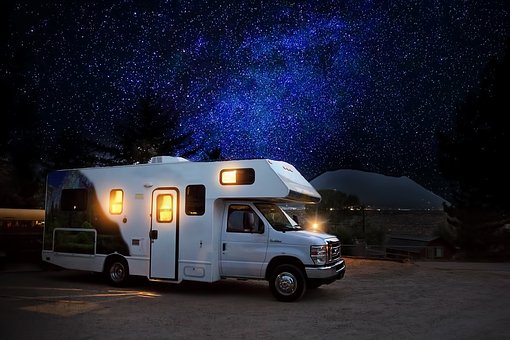
The Class C, as I’ve heard it described, is a box built by an RV company and positioned on the frame of a Chevrolet or Ford chassis truck. The box referred to of course, is your home and gives the appearance of a small mobile home inside. It usually comes with all the comforts of a Class A, but on a smaller scale. The Class C, like the Class A, comes in various lengths and has ample storage. Due to an overhead above the cab area, a bed is usually built in there. Class C’s are good for smaller budgets and larger families. They also are self-sufficient, affording you the ability to go off-grid for a period of time and boondock at your leisure. However, like a Class A, you can’t just park these units anywhere. They are easier to drive than a Class A as they drive much like a U-Haul truck as opposed to a bus.
They do not have the same appealing look as the Class A as they tend to look more like a camper than a coach.
TRAVEL TRAILER
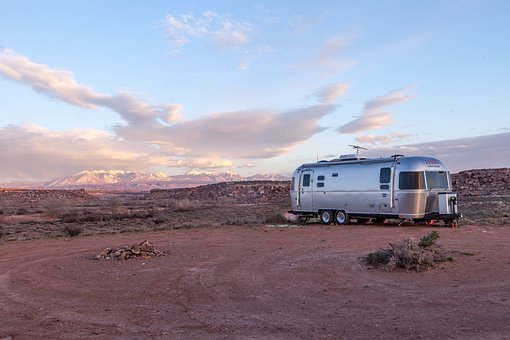
The travel trailer has many advantages. You can tow one with a pickup truck or an SUV. Some of the smaller, lighter ones can be towed with a family sedan. They cost less than the 3 classes mentioned above. Once set up in a camping area, your tow vehicle can be used to go sightseeing, shopping or to run other errands with.
Disadvantages tend to be that these trailers can have sway and handling problems for some by causing steering difficulties and braking. Slow and cautious is key.
TOY HAULER
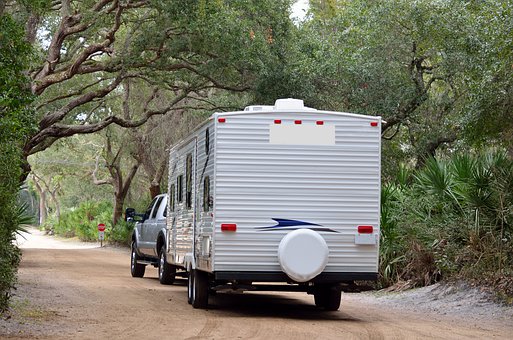
The toy hauler was designed with sports enthusiasts and families in mind. They offer a large cargo area in the rear with a let-down door for driving 4-wheelers, motorcycles, bicycles, snowmobiles, jet skis or whatever one wants to carry inside. Most toy haulers also offer a bed in this garage area that raises so your toys can be parked underneath, otherwise the bed can be let down for use when no toys are inside.
Just in front of this garage area is the kitchen, living room and usually a small bathroom.
If considering a purchase of this type trailer, keep in mind the weight of all your toys combined with the trailer and other furnishings so you can make an informed decision as to what type vehicle will be adequate to tow it.
FIFTH WHEEL
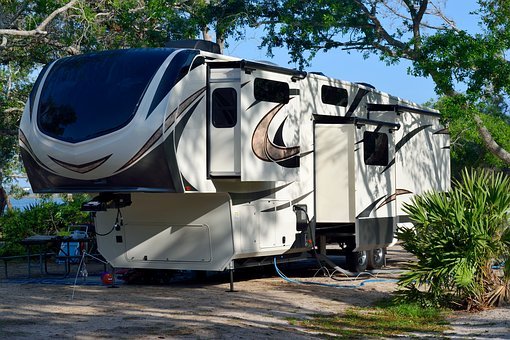
A fifth wheel can cost less than the motorized RV’s. Some have a split-level floor plan. This is caused by the goose-neck type hitch that fits into and locks into place in the fifth wheel in the back of your pickup truck. This also places a good deal of the weight over your pickup trucks rear axle thereby improving traction and handling of both vehicles.
An added benefit is when you get to your RV park or wherever you decide to park, you simply unhook your truck and can use it to go sightseeing, shopping or whatever. This is much easier than driving a large motor home to the supermarket. One of the disadvantages of the fifth wheel is that it rides higher than a travel trailer, so it tends to be affected more by cross winds and can be difficult to handle in strong winds and storms. The fifth wheel hitch also limits the use of the truck bed for carrying large items for your camping needs. Most fifth wheels have generous storage areas, so this is not much of an issue.
VANS
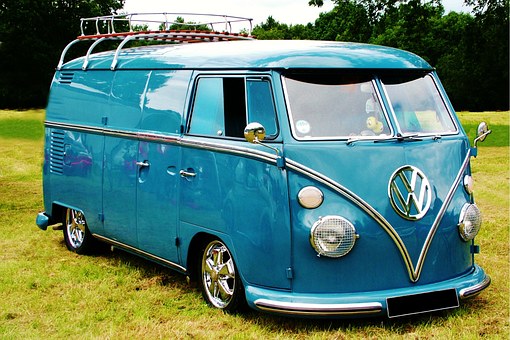
Yes, just your everyday common cargo vans. These vans are becoming more and more appealing to the solo traveler and some couples. Cargo vans are much cheaper than a typical Class B. The owner then builds them out to fit his / her personality to include a kitchen area, bed, TV and even some with a small bathroom. Otherwise, they might have a porta-potty and portable shower. More and more of these are also placing solar panels on top to provide all their electrical needs when camping off-grid. I’ve run across lots of van “nomads” and these type vehicles tend to be preferred by the nomadic type personality that likes to go way off-grid and stay there for weeks at a time and follow the sun and warm weather, especially in the southwest USA. These are very “stealthy” type vehicles that no one suspects is an RV. They can be parked anywhere and you can take a nap or live in town, on the beach, parked on a street in a residential area and no one knows you’re inside. Sprinter vans seem to be the van of choice as they are tall enough to afford even those over 6’ tall to stand erect inside.
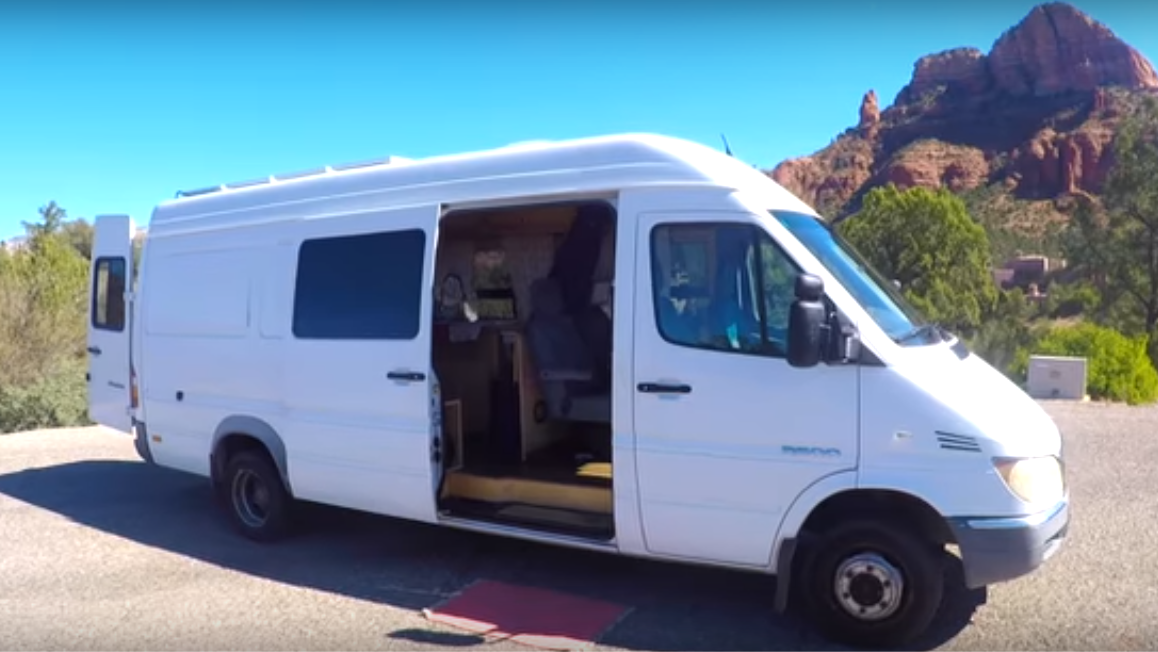
Until next time…


